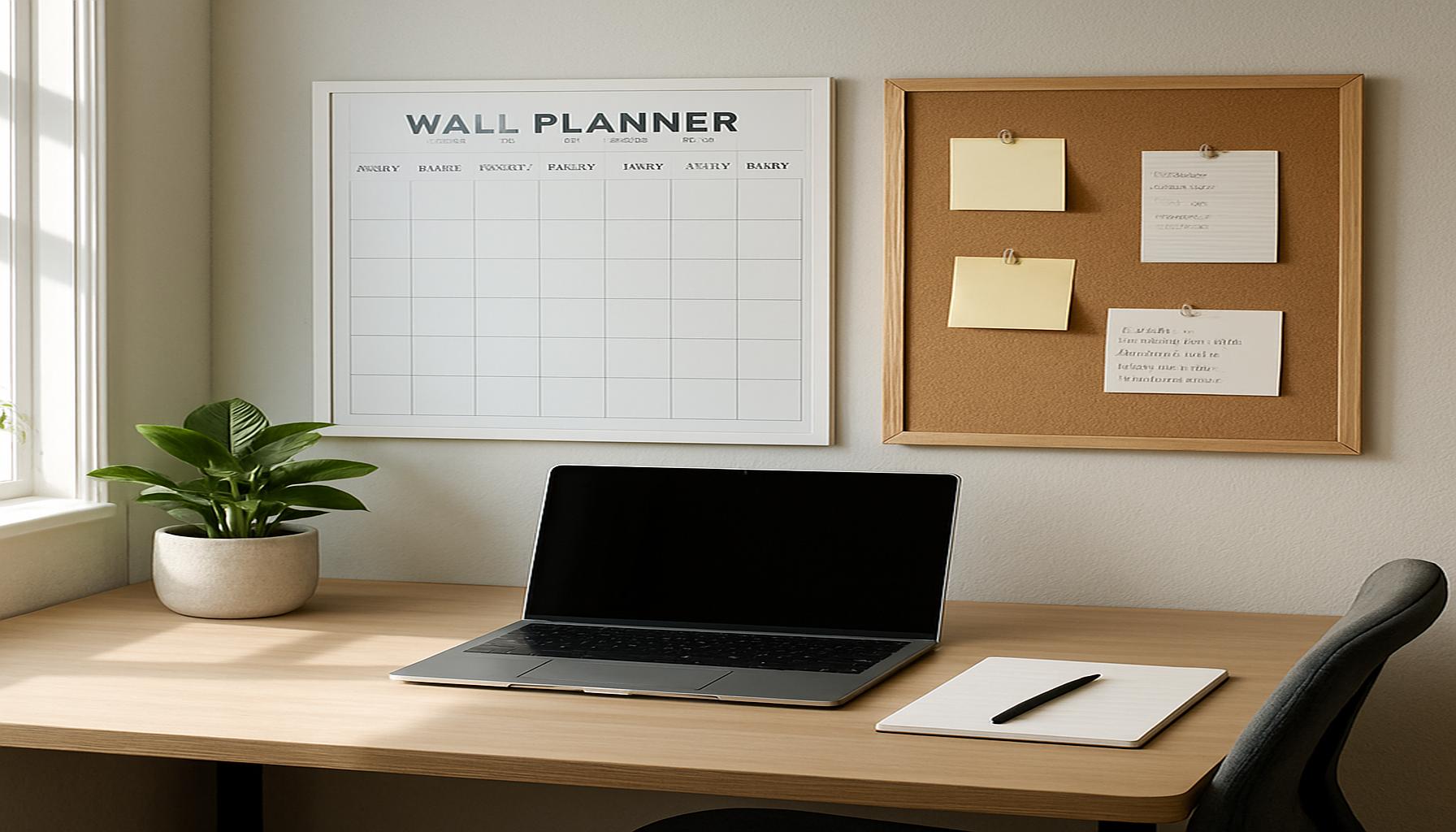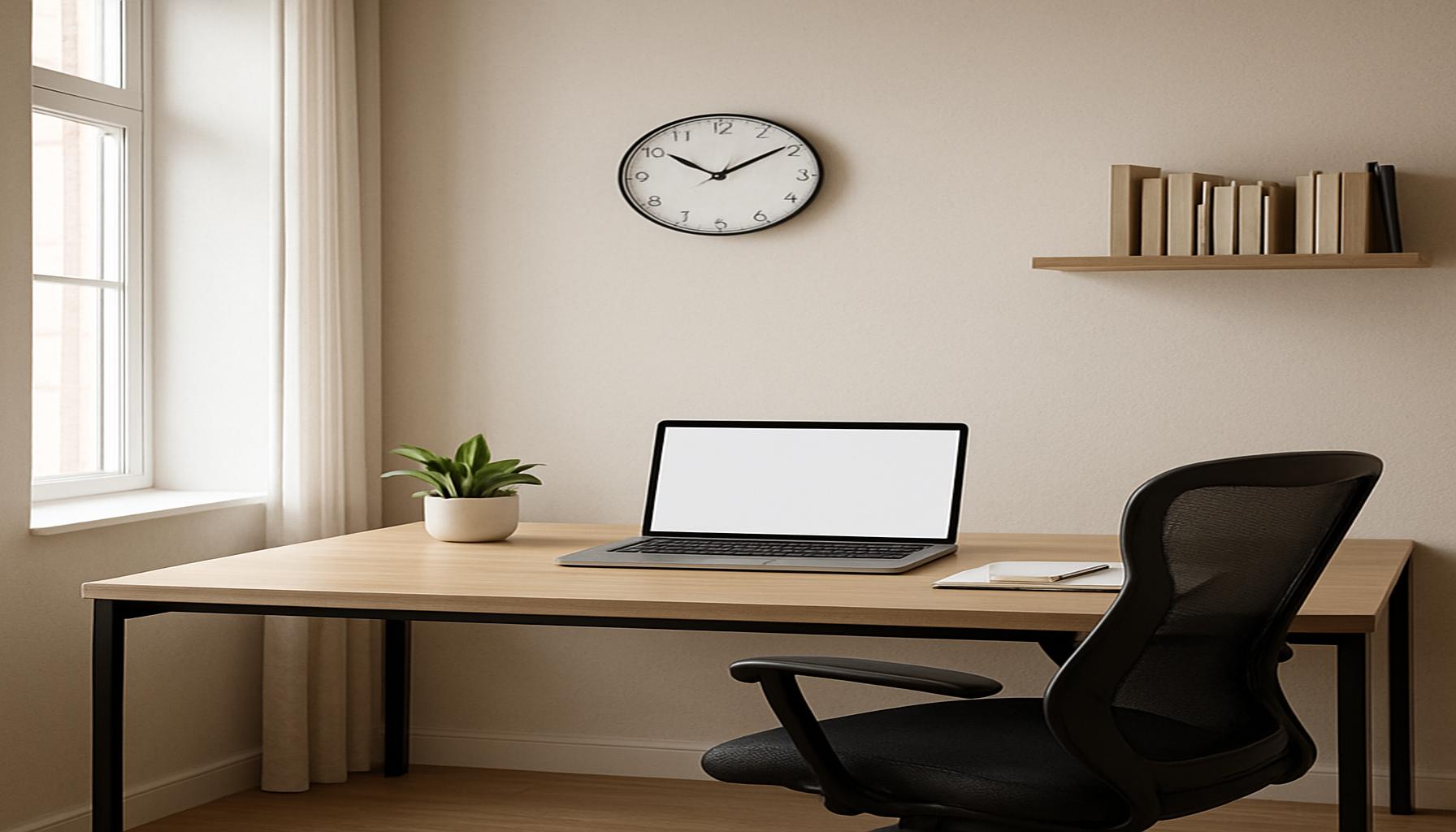Personal Organization Strategies to Boost Workspace Efficiency

Unlocking the Potential of Your Workspace
In today’s fast-paced world, the way we organize our personal space has a profound impact on productivity and mental clarity. It’s no secret that our environment influences our thinking and behavior. A cluttered desk might lead to a cluttered mind, making it harder to stay focused and efficient. This is where the concept of minimalism comes into play. Minimalism emphasizes the importance of decluttering, allowing individuals to focus on what truly matters. By reducing unnecessary distractions, a well-arranged workspace not only facilitates efficiency but also fosters creativity and reduces stress, ultimately enhancing overall well-being.
Why Personal Organization Matters
Implementing personal organization strategies can lead to remarkable improvements in both your professional and personal life. Numerous studies suggest that a tidy workspace leads to a more productive and happier individual. Consider the following benefits:
- Enhanced focus on tasks at hand, leading to higher quality outputs and satisfaction.
- Time-saving through reduced distractions, making deadlines more manageable and achievable.
- Increased motivation driven by a tidy environment, as a clear space often correlates to a clearer mind.
A well-organized workspace can act as a catalyst for creativity and innovation. By having a structured environment, your mind is freer to wander and explore new ideas without being bogged down by the chaos of clutter. Moreover, an organized space reflects a sense of professionalism, which can positively impact interactions with colleagues and clients. Observing the transformation from chaos to order can also boost morale, leading to a positive work culture.
As we delve into this article, prepare to discover the Top 5 strategies that can transform your workspace into a hub of efficiency. Each method will provide you with actionable insights, from adopting time-tested organization techniques to integrating modern solutions like digital tools for task management. These strategies will not only help you achieve a more organized and productive work life but also encourage a sustainable approach to workspace management. So, whether you’re working from home or in an office, these insights aim to refine your environment, ensuring it supports your goals and ambitions.
Top 5 Personal Organization Strategies to Maximize Workplace Efficiency
In today’s fast-paced world, personal organization is crucial to maximizing productivity and maintaining a clear workspace. The demand for effective organizational strategies has increased with the rise of minimalism, a movement advocating for simplicity in all aspects of life. Minimalism emphasizes reducing clutter to boost efficiency and mental clarity. Here, we present the top five strategies that can help you transform your workspace into a sanctuary of productivity, ranging from digital decluttering to the creation of an ergonomic workspace.

5. Digital Decluttering
In an era where technology permeates every aspect of professional life, our digital environments can become overwhelmingly cluttered, mirroring, and sometimes exacerbating, the mess found in our physical spaces. Digital decluttering is a critical first step in maintaining order, involving the organization of files, emails, and applications on your devices. Start by categorizing your digital documents into well-defined folders and removing redundant files. An easy-to-navigate filing system not only saves time but also maximizes productivity.
Emails often form a significant part of digital clutter. Consider implementing a strict email management system by using folders and labels to organize incoming and outgoing correspondence. Set specific times for checking emails to avoid constant inbox distractions. Regularly scheduled digital cleanups, perhaps once a month, can help maintain an organized virtual environment. This practice ensures that your digital workspace is as tidy and functional as your physical one, thereby contributing significantly to overall productivity.
4. The Power of a Weekly Review
The commitment to a weekly review is a powerful practice in effective personal organization. Amidst a busy workweek, it’s easy to lose track of ongoing tasks and long-term objectives. A weekly review session encourages reflection on both your accomplishments and challenges over the past week. By dedicating specific time each week to assess your goals, deadlines, and tasks, you ensure that important items are not overlooked.
Checklist for a Weekly Review:
- What did you accomplish this week?
- Which tasks need to be prioritized for the upcoming week?
- Are there any goals that need revision?
This practice allows you to adjust strategies and priorities, ensuring a focused approach to work. It also provides the opportunity to celebrate your achievements, thereby boosting motivation for future tasks. By maintaining a structured view of your week, you can manage your time and resources more effectively, reducing stress and improving output.
3. The Zen of Minimalism
Minimalism transcends being merely a lifestyle choice; it’s a powerful strategy for enhancing personal organization. By minimizing distractions in your workspace, you foster an environment conducive to deep focus and creativity. Implementing minimalistic design involves a thorough decluttering of your physical space—keeping only essential items while discarding or donating the rest. A popular method is the ‘one in, one out’ rule: for every new item introduced to your space, one should be removed to maintain balance.
A visually minimal environment can lead to mental clarity, as there are fewer distractions to divert your attention from primary tasks. This streamlined approach not only boosts efficiency but enhances the overall quality of work by encouraging greater concentration and productivity. Minimalism, therefore, represents a poignant yet simple method for clearing both physical and mental pathways to success.
2. Workflow Systems: The Kanban Method
The Kanban method is a renowned visual workflow management system that amplifies efficiency and organization. Originally developed by Toyota for manufacturing processes, it has become a versatile tool in various industries. This method employs a board, typically divided into columns, with cards that represent tasks at various stages—such as ‘to-do,’ ‘in progress,’ and ‘done.’
The visual nature of Kanban helps provide a clear overview of ongoing tasks, allowing for immediate recognition of what needs attention and what can wait. This reduces the anxiety commonly associated with looming deadlines and fosters an environment of accountability within work processes. Software applications like Trello enable easy implementation of the Kanban method in digital form, offering a blend of flexibility and efficiency as projects evolve.
1. Create an Ergonomic Workspace
Topping our list of strategies is the creation of an ergonomic workspace, which is arguably the most effective strategy for maximizing efficiency. While we often think of productivity in terms of time and workflows, physical comfort plays an equally crucial role. A well-structured ergonomic setup not only promotes physical health but also enhances focus and productivity.
Key Aspects of an Ergonomic Workspace:
- Correct chair height and support to maintain good posture
- Desk height adjustment to prevent strain on wrists and forearms
- Monitors positioned at eye level to avoid neck strain
- Optimal lighting to reduce eye strain, avoiding both dim and overly harsh light
Incorporating personal touches, such as plants or artwork, can cultivate a pleasant and inspiring atmosphere, further boosting productivity. Investing time and resources into developing an ergonomic workspace is not merely about comfort—it’s about enhancing efficiency and health simultaneously, ensuring you work smarter, not just harder.
Implementing these ranked strategies—beginning with digital decluttering and culminating with the establishment of an ergonomic workspace—can significantly enhance efficiency in your professional life. By embracing these approaches, each with its unique benefits, you are poised to elevate both productivity and overall well-being, transforming your workspace into a tailored oasis of innovation and comfort.
| Category | Key Features | Advantages | Disadvantages | Ideal Users |
|---|---|---|---|---|
| Time Management Techniques | Utilization of tools like calendars, timers, and task lists | Increases productivity by segmenting tasks into manageable blocks. | Can become overwhelming if not tailored to individual needs. | Professionals in fast-paced environments such as corporate offices and freelancers. |
| Workstation Optimization | Arrangement of physical workspace, ergonomic tools, and adequate organization | Enhances comfort and reduces physical strain, allowing for longer periods of concentrated work. | Initial cost of ergonomic furniture and tools. | Individuals working remotely or in home offices. |
| Digital Organization Systems | Use of software applications and cloud storage for organization | Facilitates easy access to important files and eliminates clutter. | Dependence on technology can pose risks such as data loss. | Tech-savvy individuals and teams managing multiple files or projects. |
| Decluttering Strategies | Regular reviews and minimization of unnecessary items | Creates a clearer mental space by reducing distractions and visual clutter. | Can require a significant investment of time upfront. | Individuals looking to boost concentration and productivity. |
Organizing one’s workspace is crucial for maximizing efficiency and productivity. Techniques such as employing effective time management can redefine how tasks are approached. By segmenting work into smaller chunks, professionals find they can maintain focus and enhance output.Moreover, optimizing a workstation goes beyond simply arranging items aesthetically; it heavily influences comfort and health. Ergonomic tools help alleviate physical strain, making long hours more sustainable. Digital organization systems have transformed how files and data are managed, promoting ease of access and reducing physical clutter. However, one must also be cognizant of potential digital risks, emphasizing the need for regular data backups and a robust tech understanding.The act of decluttering, while sometimes seen as tedious, lays the groundwork for an improved work atmosphere. Regularly removing unnecessary items ensures that individuals are not only more organized but also more focused on the tasks that truly matter. Each of these strategies presents unique advantages and potential challenges, tailored for those ready to adapt and elevate their work efficiency.
Frequently Asked Questions About Personal Organization Strategies for Maximizing Workspace Efficiency
What are the best strategies for organizing my workspace to enhance productivity?
To enhance productivity, consider starting with a thorough decluttering process. Removing unnecessary items not only frees up space but also reduces mental clutter. Implementing a zoning strategy can help you assign specific areas for different tasks, aiding in maintaining order. Additionally, utilizing organizational tools such as filing cabinets, cable management solutions, and digital organization apps can significantly streamline your workflow.
Can personal organization techniques truly impact efficiency?
Yes, personal organization techniques can have a profound impact on your efficiency. A well-organized workspace minimizes the time spent searching for documents and tools, thereby increasing productivity. According to various efficiency studies, an organized environment can lead to a 15-20% boost in productivity levels. Furthermore, a tidy space reduces stress, allowing you to focus better and think more clearly.
How often should I reorganize my workspace?
The frequency of reorganizing your workspace often depends on your personal workflow and the nature of your tasks. Some experts suggest a monthly reassessment to ensure organizational strategies are still effective. However, a brief daily or weekly tidy-up can help maintain order and prevent clutter from accumulating.
What digital tools can assist in maximizing workspace efficiency?
Digital tools such as task management apps like Todoist or Trello can help you keep track of your responsibilities and deadlines. Cloud storage solutions like Google Drive or Dropbox offer easy access to files, reducing paper clutter. For those seeking to minimize distractions, apps like Freedom or Focus@Will can help maintain focus by blocking distractions or providing productivity-enhancing background music. Utilizing these tools can be a game-changer in optimizing your workspace efficiency.
How can I maintain an organized workspace in a small area?
In a limited space, vertical storage solutions can be particularly useful. Wall-mounted shelves or pegboards can help maximize your vertical space. Additionally, consider multifunctional furniture pieces that offer storage, such as desks with built-in drawers or filing cabinets. It’s crucial to keep only what is necessary within reach to prevent overcrowding and maintain a clean and efficient workspace.
Conclusion
In today’s fast-paced world, embracing effective personal organization strategies is essential for enhancing workplace efficiency. The journey through this article has highlighted how integrating organizational techniques with the principles of minimalism can transform a cluttered desk into a streamlined powerhouse of productivity. The importance of being organized cannot be understated as it plays a vital role in minimizing distractions, maximizing focus, and encouraging a clear path toward achieving professional goals.
Key Takeaways
- Decluttering is a Catalyst: Minimizing the number of items on your desk can create a serene environment that boosts concentration.
- Mindful Item Arrangement: Arranging tools and devices strategically enhances accessibility and reduces time wasted in searching.
- Digital Organization: Maintaining a tidy digital workspace is as crucial as a physical one, promoting seamless workflow management.
- Scheduled Maintenance: Regularly revisiting and revising organizational methods ensures your workspace remains an efficient haven.
- Personalized Systems: Tailoring strategies to suit individual working styles fosters a personalized touch, enhancing comfort and efficiency.
Incorporating these strategies into daily routines requires discipline but promises significant rewards. The minimalist approach, which focuses on the essentials, encourages the shedding of unnecessary distractions, allowing for a more intentional and purposeful work environment. The benefits stretch beyond the workspace, offering a sense of control and clarity that permeates through all aspects of life.
In conclusion, personal organization is not a one-size-fits-all solution, but rather an evolving practice that reflects individual needs and preferences. By understanding and implementing these strategies, one can create not only a more effective workplace but also a more balanced and fulfilling lifestyle. The road to efficiency is paved with deliberate choices and continuous improvement, inviting a journey worthy of exploration for anyone eager to enhance their working experience.


